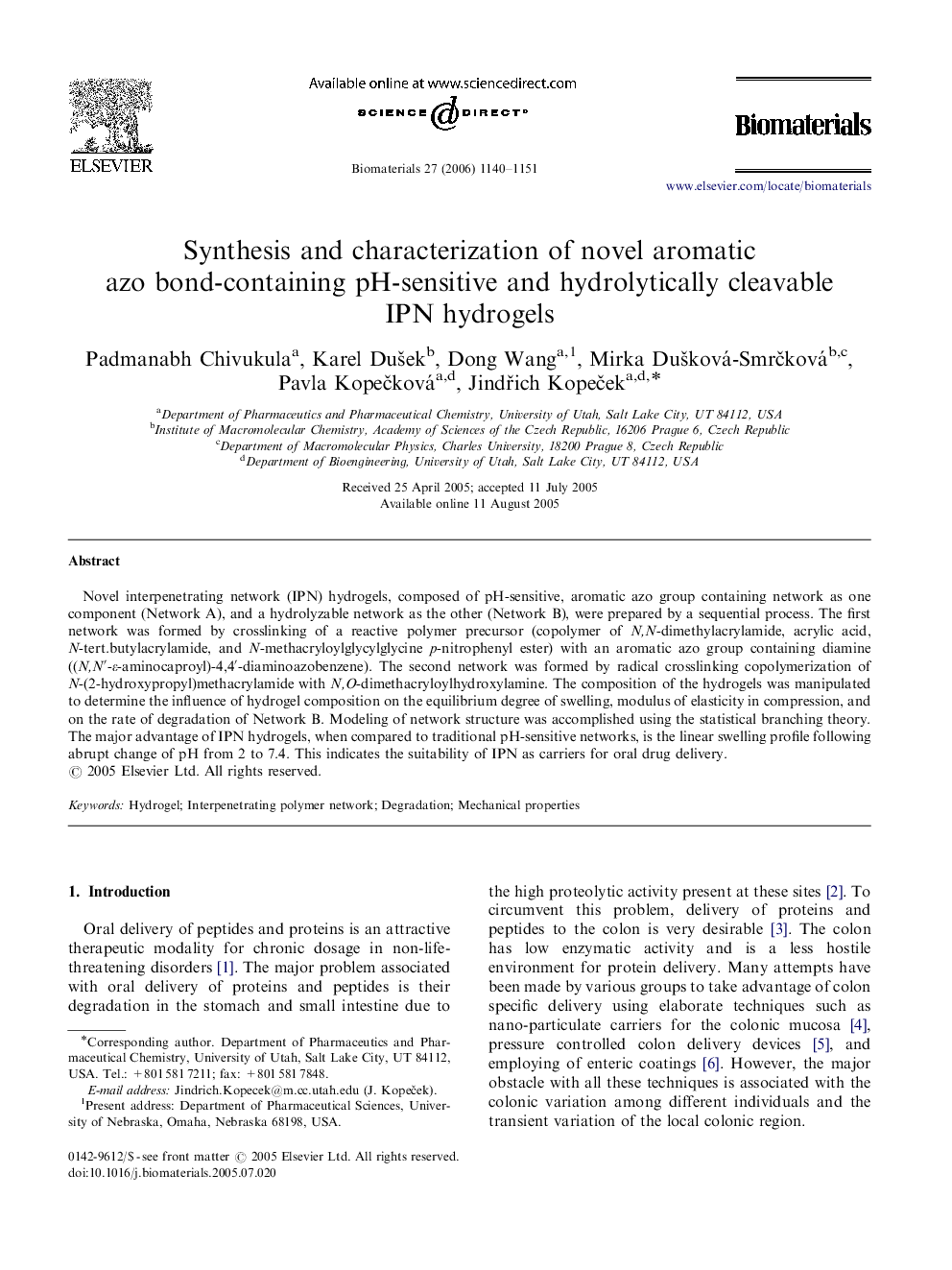| Article ID | Journal | Published Year | Pages | File Type |
|---|---|---|---|---|
| 12203 | Biomaterials | 2006 | 12 Pages |
Novel interpenetrating network (IPN) hydrogels, composed of pH-sensitive, aromatic azo group containing network as one component (Network A), and a hydrolyzable network as the other (Network B), were prepared by a sequential process. The first network was formed by crosslinking of a reactive polymer precursor (copolymer of N,N-dimethylacrylamide, acrylic acid, N-tert.butylacrylamide, and N-methacryloylglycylglycine p-nitrophenyl ester) with an aromatic azo group containing diamine ((N,N′-ε-aminocaproyl)-4,4′-diaminoazobenzene). The second network was formed by radical crosslinking copolymerization of N-(2-hydroxypropyl)methacrylamide with N,O-dimethacryloylhydroxylamine. The composition of the hydrogels was manipulated to determine the influence of hydrogel composition on the equilibrium degree of swelling, modulus of elasticity in compression, and on the rate of degradation of Network B. Modeling of network structure was accomplished using the statistical branching theory. The major advantage of IPN hydrogels, when compared to traditional pH-sensitive networks, is the linear swelling profile following abrupt change of pH from 2 to 7.4. This indicates the suitability of IPN as carriers for oral drug delivery.
